
Influx of Venezuelans sorely tests Peru’s economy and labor market
By Kailey Broussard/ Cronkite Borderlands Project |
LIMA, Peru – Federal authorities face the daunting task of assessing how Peru’s economy and labor market can absorb the more than 700,000 Venezuelans who have fled their country and resettled here in the past few years.
Adding to the challenge is an estimate by the International Organization for Migration that the number could grow to more than 1.4 million by the end of 2019.
“We understand, and we understood, this is one crisis – a human crisis,” said Roxana del Aguila Tuesta, superintendent of the Ministry of Migration. “We cannot close our eyes, close our ears or close our mouths.”
Peru’s nearly two decades of economic growth – along with lenient immigration requirements that include a temporary residency permit, known as a PTP, that allows refugees to legally work – have made the country the second most popular destination for Venezuelan migrants behind neighboring Colombia.
Del Aguila conceded that the influx caught her government off guard, and she remains concerned about how Peru can provide for the continued stream of Venezuelans seeking refuge.
“We are very worried because if we will help then we take on providing hospital service, health service, education service, work,” she said.
Del Aguila said members of her staff are working round the clock processing close to 5,000 applications per day to address a huge backlog of PTP and asylum applications submitted before Nov. 1.
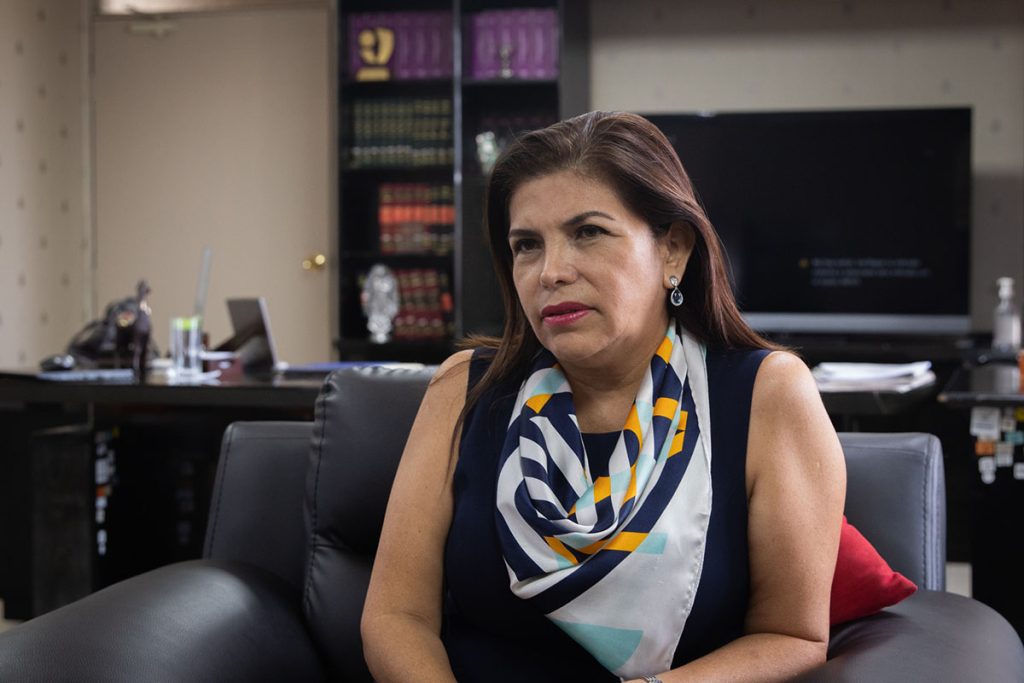
Peru’s efforts have been lauded by those working closely with the refugees.
“For us, the response of the government in Peru towards the influx of Venezuelans refugees and migrants has been extremely solid,” said Regina de la Portilla, news media coordinator for the United Nations High Commissioner for Refugees (UNHCR) in Latin America. “It’s an incredible response to a very complex situation.”
Even so, these are uncertain times for more than 400,000 Venezuelans seeking the right to work. The PTP program’s expiration at the end of 2018 has left those who have entered the country since November with fewer legal avenues for work, education and bank services. Less than 1% of Venezuelans who have applied for asylum – the only other program that grants permission to work – have been approved, according to UNHCR.
“We are expecting there’s going to be a new sort of alternative legal status that allows Venezuelans to access their basic rights quickly and efficiently, as they have been doing before with a PTP,” de la Portilla said.
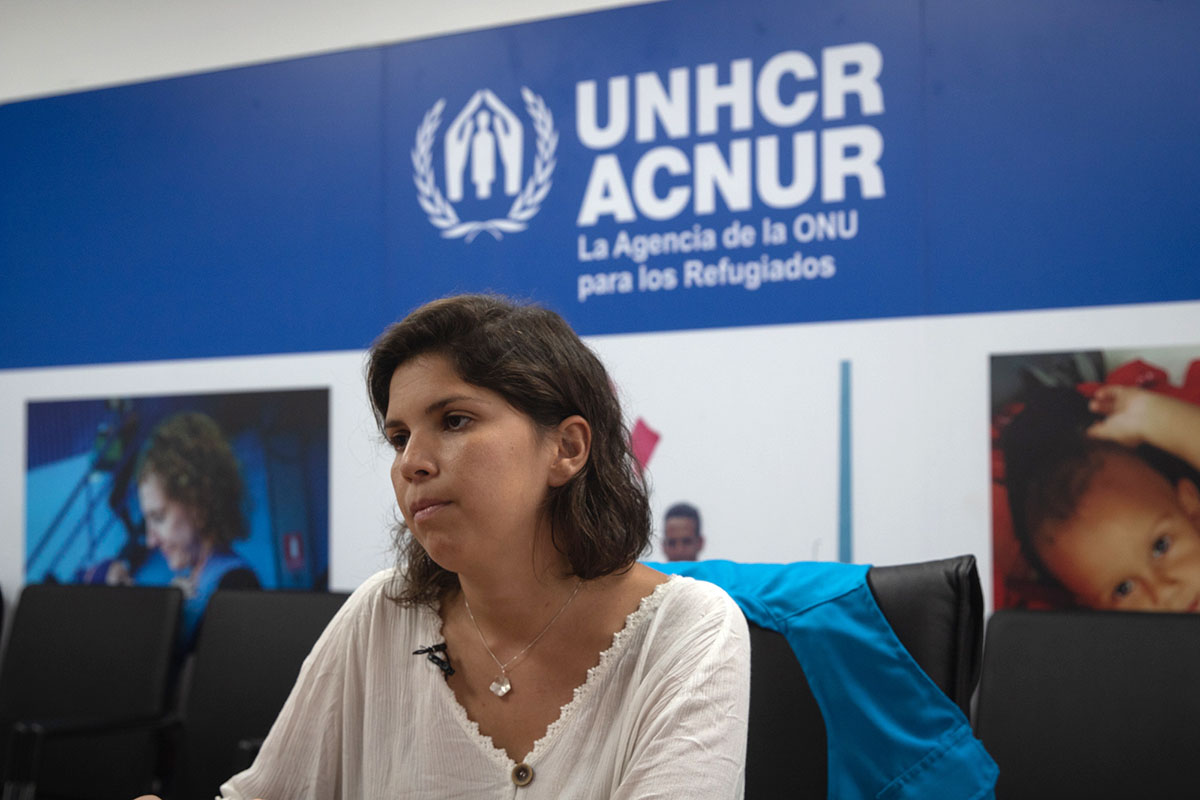
As UNHCR and other organizations address the immediate needs of migrants, such as care at border crossings and legal assistance, focus is shifting toward helping Venezuelans access work or develop entrepreneurial skills.
Peru has had one of the fastest-growing economies in Latin America, according to the World Bank. Its GDP grew by 6% annually from 2002 to 2013. But in the wake of the migrant crisis, the World Bank reports, Peru’s growth is slowing – GDP grew by 2.5% in 2016-17, less than the previous year.
Peru has prospered despite unstable political leadership. In April 2019, a judge ruled former President Pablo Kuczynski should be imprisoned for three years for taking bribes from a Brazilian construction company. Two days earlier, another former president, Alan Garcia, committed suicide rather than be arrested in connection with the same corruption probe.
“Peru’s really been dogged by corruption scandals over the past year,” said economist Jesse Rogers, an analyst for Moody’s Analytics. “Nonetheless, the framework for the rule of law is among the strongest in Latin America.”
In addition, the country’s young labor force presents an economic boon, he said.
The Venezuelans who are joining Peru’s labor force are facing tough odds. In April 2018, Peru’s National Institute of Statistics and Information Technology reported that unemployment in Lima, the nation’ capital, where 85% of the Venezuelan refugees have relocated, reached 8.1%, an eight-year high.
For Venezuelans and Peruvians alike, the majority of jobs rests in unregulated, mostly unmonitored labor.
Julio Gamero, a specialist with the International Labor Organization (ILO), said nearly 72% of workers in Peru are in the informal sector, meaning they have no guaranteed income or benefits. Less than 1% of Venezuelan migrants and refugees have found formal jobs, according to figures from ILO and the Ministry of Labor and Promotion of Employment. One-fifth of Peruvians live below the poverty line, meaning the earn less than $410 a month, according to ILO. Although Peru’s minimum wage is 930 soles a month (just less than $300), the wage isn’t guaranteed for informal workers.
The hustle of informal workers is readily visible along the streets of San Juan de Lurigancho, Lima’s largest district, where large numbers of Venezuelans have migrated. Between stoplights, Peruvian and Venezuelan vendor vye with one another to make a profit.
Julia Lorena Campos Noguera, 22, and Gloricelys García, 44, approach stopped vehicles with bottles of water and lemonade. Working as long as 12 hours a day, they each make a bit less than minimum wage.
The Venezuelan women arrived on Oct. 31, which was the deadline to apply for a PTP. The chance to get a temporary residency permit, they said, was a central reason they chose Peru. Their PTPs are in process. When the permits come through, Noguera said, she and García will look for jobs that will allow them time to speak with their families in Venezuela.
García and Noguera are two of more than 300,000 people whose applications for the work permit are being processed by the government. While they wait, they receive an extraordinary work permit that allows them to work for 60 days.
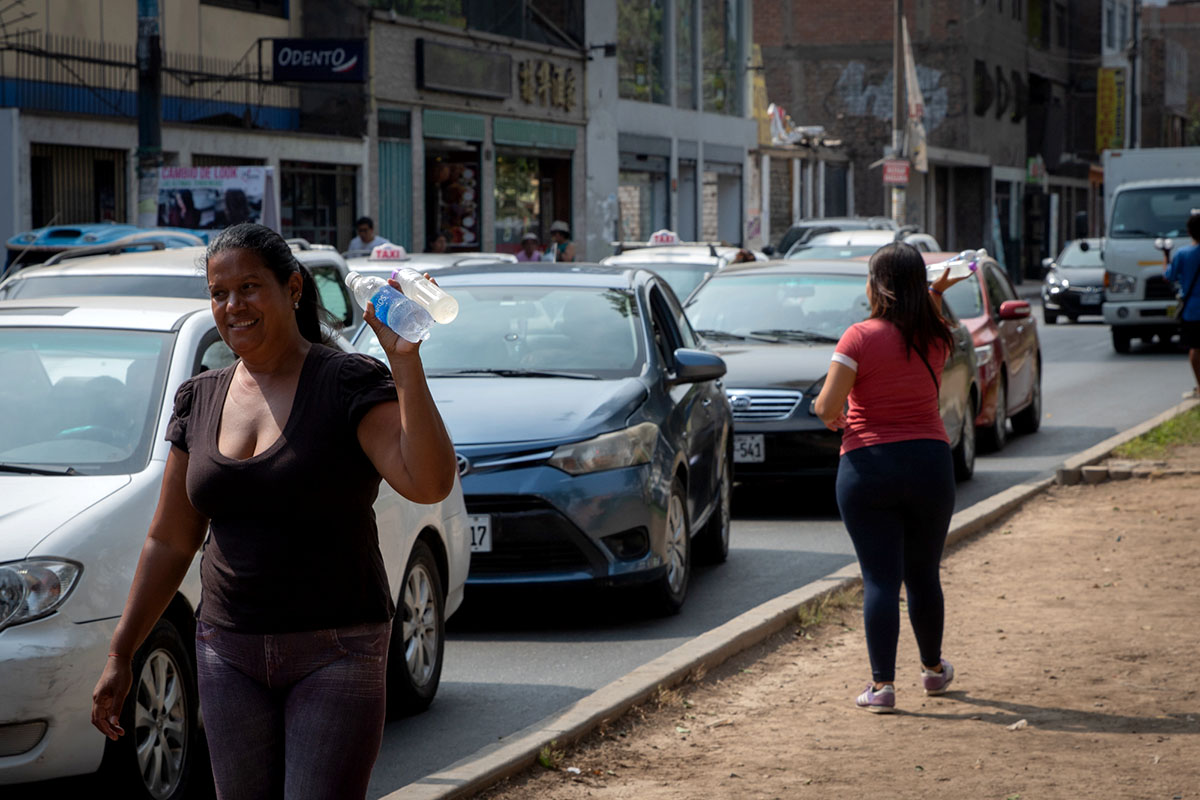
Gloricelys García, 44 (left), and Julia Lorena Campos Noguera, 22, sell water and lemonade on the streets of Lima. The women came to Peru last fall on the hope of getting temporary work permits; the paperwork is still being processed. (Photo by Kailey Broussard/Cronkite Borderlands Project)
Hawking bottles of lemonade to motorists is a far cry from the lives they led in Venezuela. Noguera recently earned a degree in business administration; García was a college professor.
But street peddling provides better prospects than other jobs in Lima, which Noguera said pay less for more work. The women grapple with paying rent and sending money back home, but street sales are preferable to service-industry jobs where employers may exploit and shortchange workers, she said.
“We prefer to be here and not spend all our time on a job for 12 hours, and in the end you realize you don’t have any money because it’s not enough,” Noguera said.
The uptick of informal workers has made some Peruvians wary. A study by the Pontifical Catholic University of Peru found that more than 75% of those surveyed felt that Venezuelans are taking jobs from Peruvians and pose a threat to the national economy.
Luisa Astocondor Chavez, 34, a Peruvian who has sold water on street sides in San Juan de Lurigancho for about a year, works the same traffic median as Noguera. She fears there are too many Venezuelans in Peru and said some have hurt Peruvians’ wages and job prospects. She also accused some Venezuelans of coming to the country with ill intentions.
“It’s not that I am against the Venezuelans, but I’m a Peruvian and I don’t like that we are caught up in all this fighting,” she said. “No more, we can’t take it anymore.”
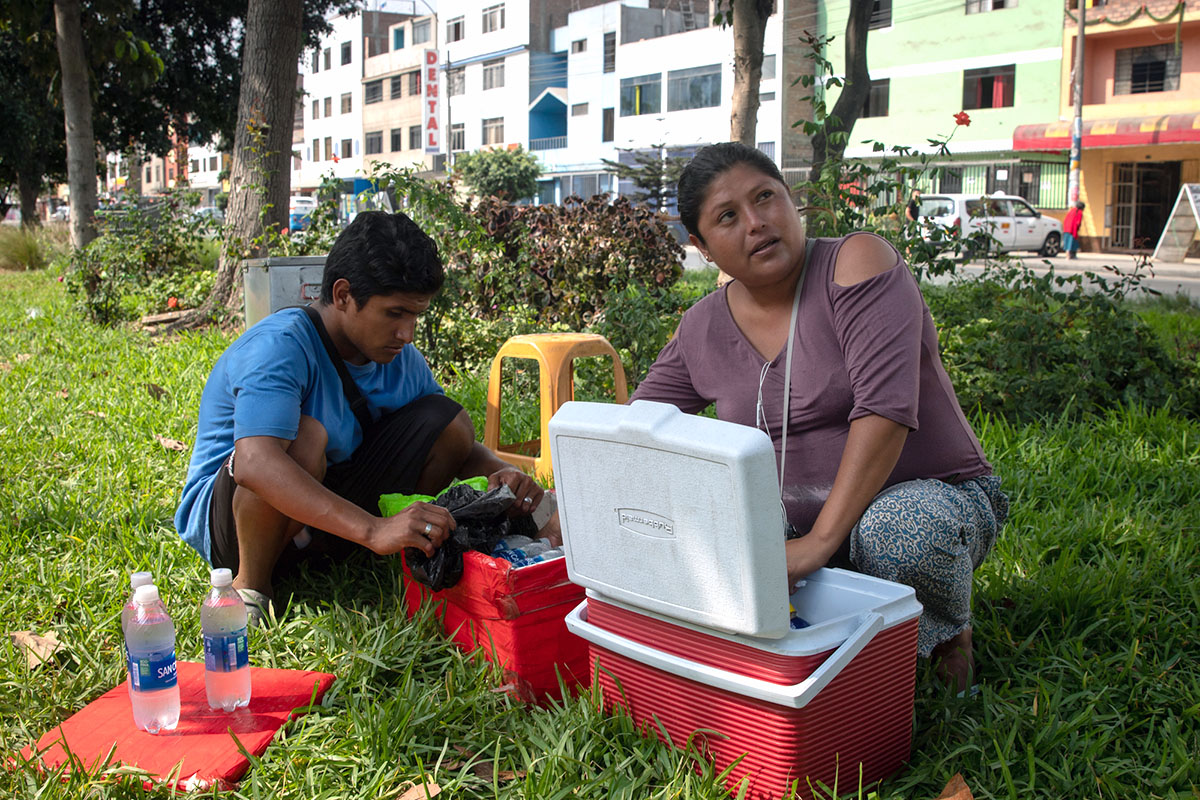
Gerardo Astocondor, 15, and Luisa Astocondor Chavez, 34, select items to sell to drivers waiting at stoplights in the capital. Chavez says she purchases her merchandise for 110 soles, or $33.33. If she sells everything, she can make up to 50 soles, a profit of about $15. (Photo by Kailey Broussard/Cronkite Borderlands Project)
For the Peruvian government, dealing with the influx of hundreds of thousands of new workers is a work in progress.
The PTP is a one-year permit that allows Venezuelans access to work, education and banking services. The program was initially offered for those who arrived before early 2017; the deadline was extended multiple times: once in 2017 and again last year before ending Oct. 31. It’s unclear whether the program will be restarted or modified in the future.
The influx of migrants into Peru, which was home to just less than 32 million people in 2018, is an unprecedented phenomenon for a country that has historically grappled with outmigration. The number of people accessing the migration ministry and special commission for refugees offices caused the website to collapse multiple times, according to de la Portilla, the UNHCR media coordinator. Both the UNHCR and the International Organization for Migration have worked with the government to bolster these systems.
“We have been scaling up. We have also installed new software with them,” de la Portilla said.
Pedro Zabaleta, 25, is among those migrants who can leverage their professional skills in the informal market.
Zabaleta sells jewelry in the Inka Market in the Miraflores district, Lima’s primary tourist area, earning around minimum wage plus commission from sales. Although it’s not the job he had in Venezuela, where he taught English and Spanish, Zabaleta was hired because he’s bilingual and had experience as a merchant.
“It’s easier for me to get a job because I have the experience and language to do it,” he said.
Zabaleta said he did not steal the job from a Peruvian worker; he simply played to his strengths.
“If Peruvian people have the skills to work, they will find work in any area, depending on their own skills,” he said.
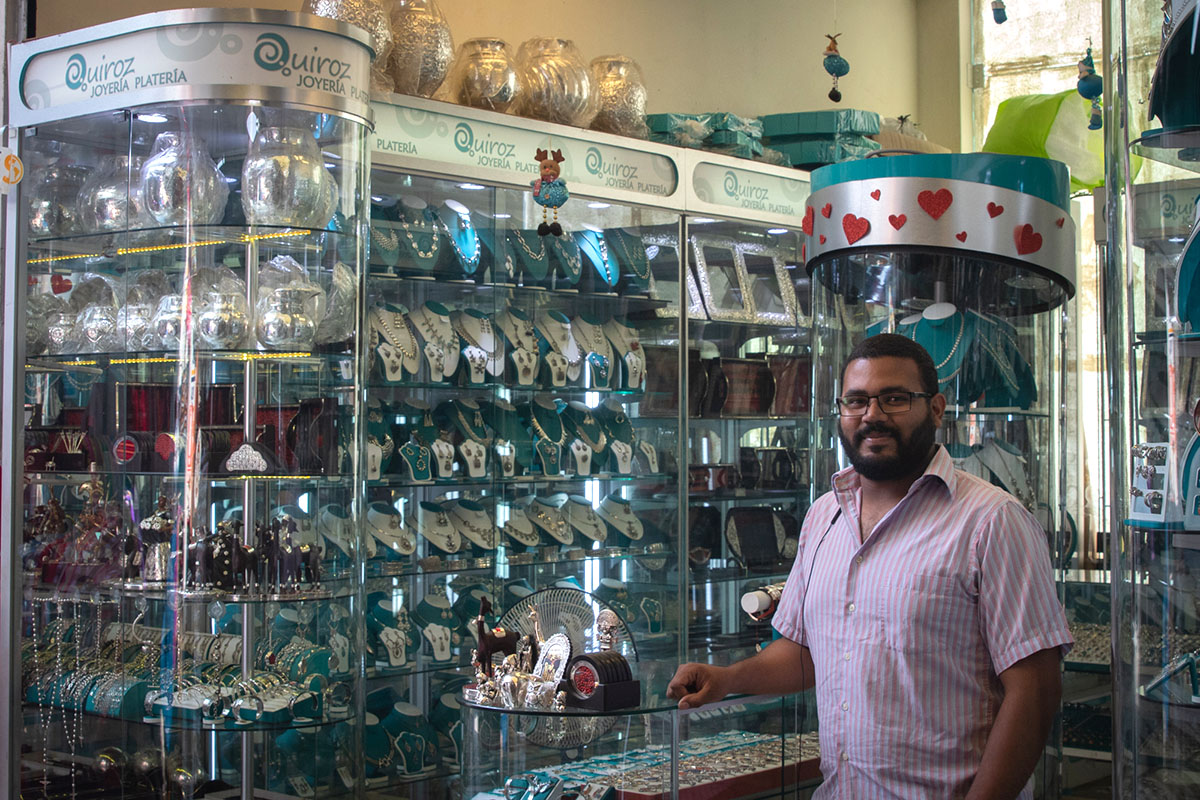
Pedro Zabaleta, 25, sells jewelry in the Inka Market. He got the job because he is bilingual. (Photo by Kailey Broussard/Cronkite Borderlands Project)
Sayjery Magallanes, 22, who was an engineering student and activist in Venezuela, also found work based on her skill set.
Magallanes works in digital marketing and social media, as well as volunteering with Union Venezolana en Perú, a nonprofit organization that has played a key role in helping Venezuelans relocating to Peru. She earns about 1,500 soles (about $450) a month and sends half to support her close-knit family back home, especially her 3-year-old niece, whom she regards as a daughter.
Magallanes applied for the PTP in October and is waiting for her meeting with Interpol, the international police agency, which does background checks on applicants, to obtain paperwork. Despite the delay, she’s grateful for how the Peruvian government has accommodated her.
“From the start, Peru was one of the countries that welcomed us like their own children,” she said.
Being away from her family is extremely difficult, Magallanes said, adding that she will never forgive President Nicolas Maduro, whom she blames for Venezuela’s economic crisis. The upheaval, which began about a decade ago, prevented her from being part of her grandfather’s final years, as well as the first few years of her niece’s life.
“The people who stay in Venezuela believe that the problem solves itself, but leaving in itself is a problem,” she said. “You have to pay rent, for lights, phones, et cetera. You still have to send money over there.”
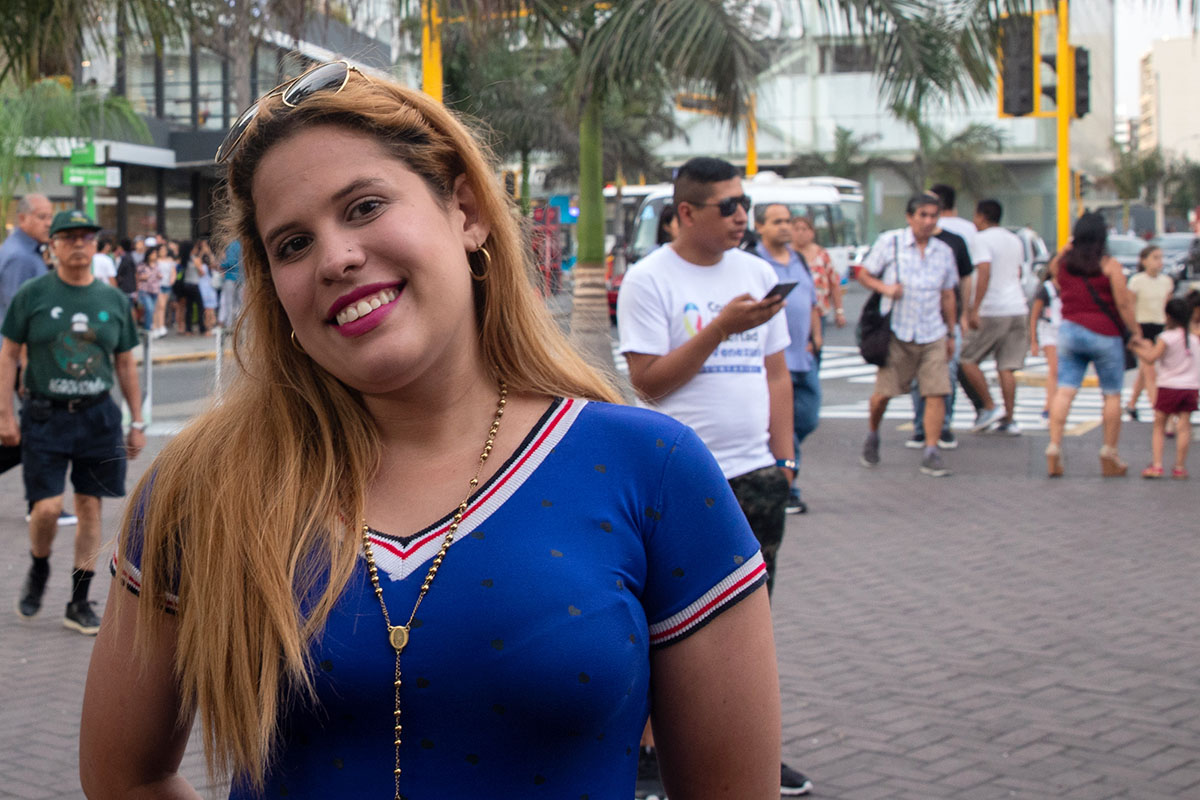
Sayjery Magallanes, 22, was an engineering student and activist in Venezuela and now earns about $500 a month doing marketing and social media work. She sends half of her earnings home to her family. (Photo by Kailey Broussard/Cronkite Borderlands Project)
After a couple of brushes with xenophobia and “bullying” after she arrived in Peru in March 2018, Magallanes said, her growth has taught her to respond to negativity with grace.
“You learn from that,” she said. “The important thing is not to defend yourself with aggressiveness but to show that you are good and to show that you are not what they say.”
As the government in Lima maps out the next steps for Venezuelan migrants, some of them are waiting for the crisis back home to de-escalate.
Zabaleta said he plans to return to Venezuela eventually. However, he said he believes his country’s prosperity is dependent on those who have left and who are working to support those who have remained in the midst of crisis.
“I consider Venezuela as not ours,” he said. “It is for our next generation. We are here, we are making, we are starting again, so we want to do something better for our next generation.”
Magallanes said she would return home in a heartbeat, especially to reunite with her niece, Ándrea. Although she said she helps everyone in her family, she most frequently sends money to Ándrea.
“She was that ray of light in the middle of darkness when you have no hope of anything,” she said.
If and when Magallanes receives her PTP, she can apply to complete her degree at a Peruvian university. Instead of engineering, however, she would study politics. And although she can never forgive Maduro for the condition Venezuela is in, she said she has him to thank for her forays into activism. And her new home.
“Peru has taught me how to move forward and how to grow as a person,” she said.
Cronkite Borderlands Project is a multimedia reporting program in which students cover human rights, immigration and border issues in the U.S. and abroad in both English and Spanish.

Leave a Comment
[fbcomments]